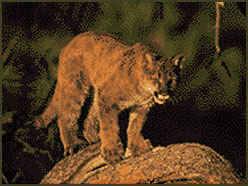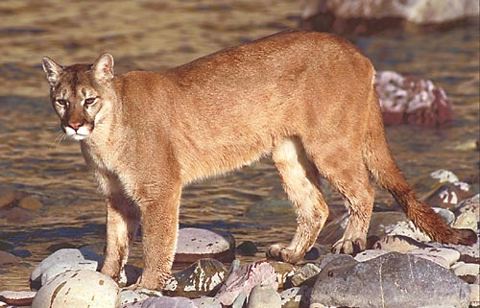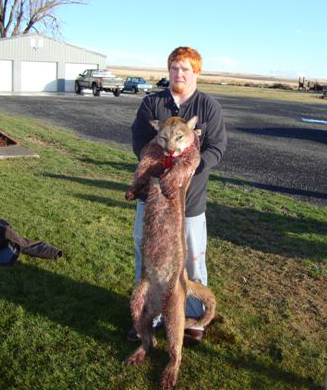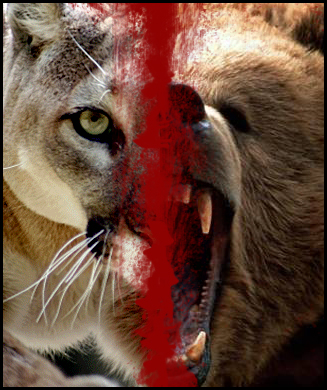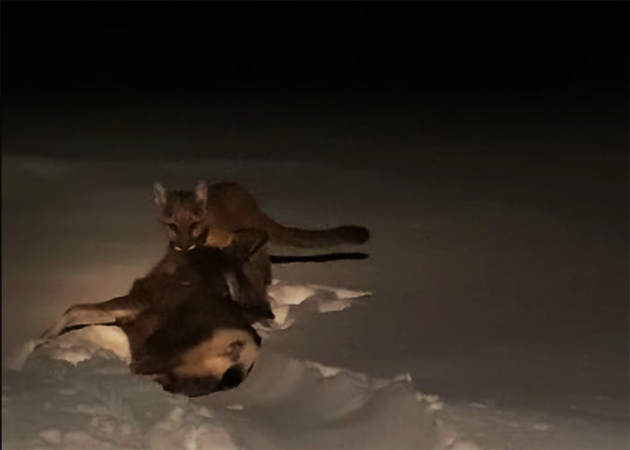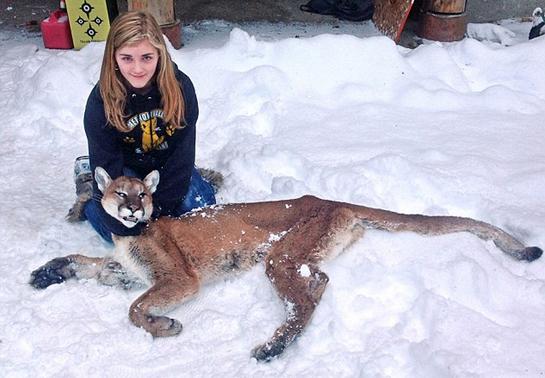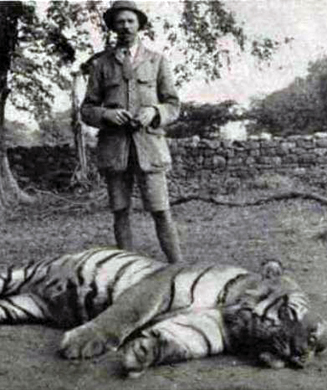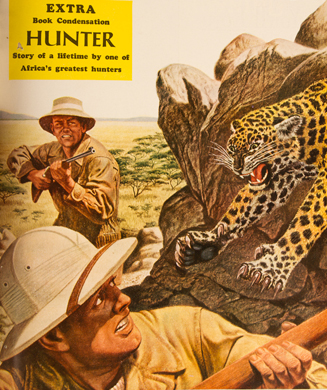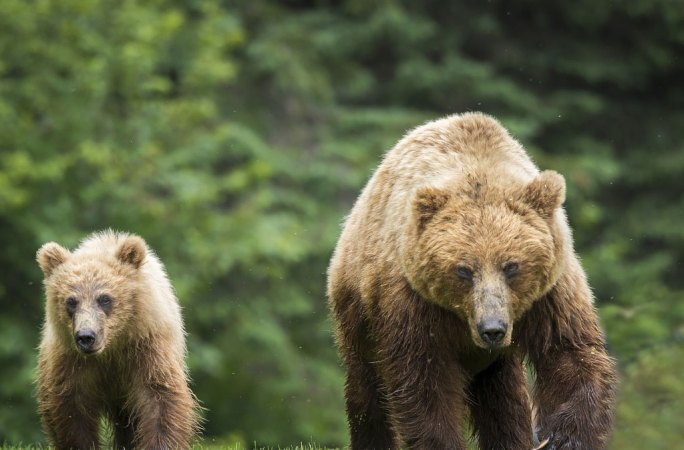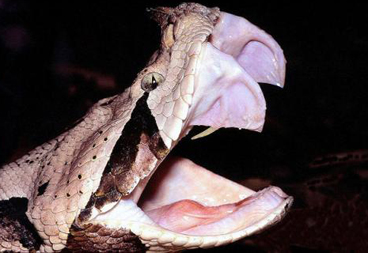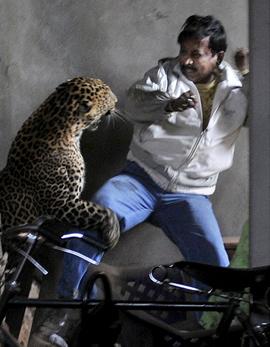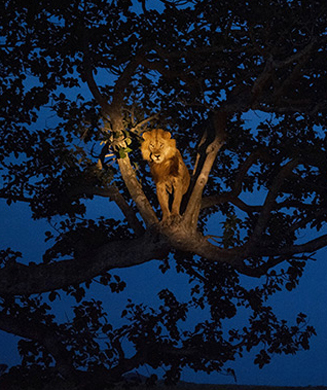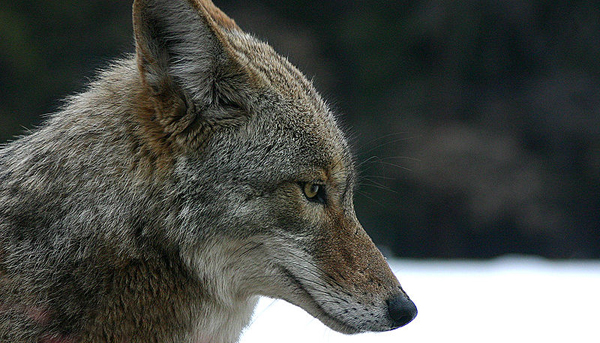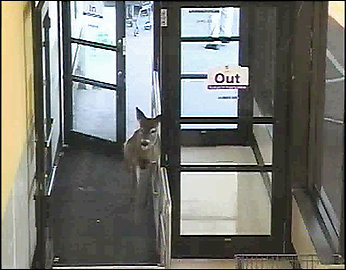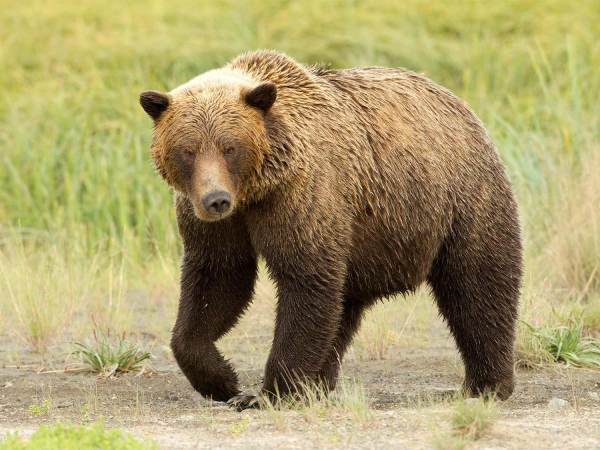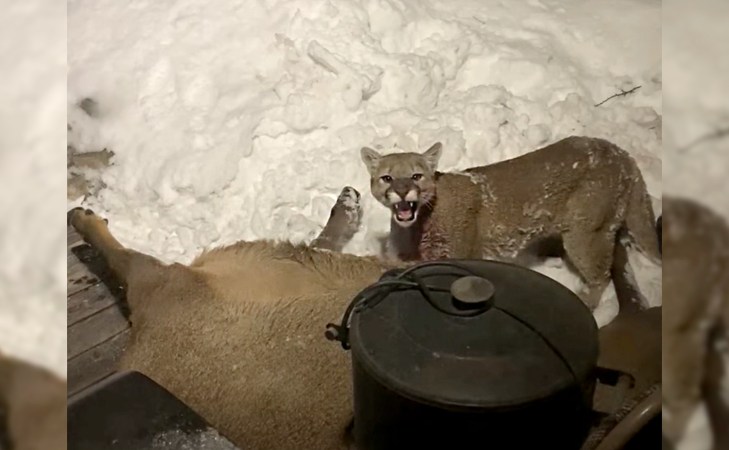On August 19, 1996, 36-year-old Cindy Parolin and three of her children were riding horses in the Similkameen backcountry, 30 miles northwest of Princeton, British Columbia. Like their mother, 6-year-old Steven, 11-year-old Melissa and 13-year-old David felt a mixture of wonder and excitement as they traveled through the vast wilderness. The four were headed to a cabin to join Parolin’s husband and other son for a camping vacation.
As the family rode along, the horses grew increasingly nervous. The cause became starkly clear when a cougar attacked, suddenly launching itself from the undergrowth at Steven. The animal missed its mark, landing on the horse just in front of the boy’s saddle. The great cat scrambled to hold onto the horse’s neck but lost its grip and fell to the ground.
Undaunted, the snarling cougar leapt again and attempted to pull Steven from the saddle. This time it got away with only a sock and shoe, but the contortions of the spooked horse caused the boy to fall to the ground. The cat was on the youngster in an instant, wrapping the struggling child in a clawed death-grip.
Parolin watched the unfolding scene in horror as the cat bared its fangs and then bit into the boy’s skull. A knowledgeable outdoorswoman and avid hunter, she knew that her son would be dead in a matter of seconds — his neck broken, skull crushed or artery lacerated in the lion’s terrible jaws. If only she had her rifle…but hunting season was weeks away, and Canadian firearms laws made off-season carry all but impossible. She had to act quickly.
Screeching a primal scream, the desperate mother leapt from her mount and rushed to Steven’s aid.
With adrenaline-fueled strength, Parolin broke a stout limb from a fallen tree and clubbed the cat away from the child. Now the lion turned its full attention to her, opening a terrible gash on her arm with a swipe of its paw. Spurred by maternal instincts, Parolin fought back. Woman and cougar melded into a blur of flashing claws, teeth and flailing fists as they wrestled on the ground.
Still thinking of her children, the embattled mother screamed for David and Melissa to grab Steven and run for help. The horses had scattered in the melee, so the older siblings half-carried their bleeding brother more than a mile back down the trail to the family car.
Melissa stayed with Steven in the vehicle while David ran to a nearby campsite for help. He enlisted the aid of Jim Manion, who, directed by David, drove to the scene. It had now been more than an hour since his mother had clubbed the cat off his younger brother. On arriving, Manion heard the mother’s screams. Moving toward the agonized sounds, he came upon Cindy Parolin, still battling the cougar. She turned to Manion, a look of raging defiance in her eyes.
“Are my children all right?”
“Yes,” Manion answered.
On hearing they were okay, she said in a half-whisper, “I am dying now.”
Parolin collapsed, but the cat still savaged her body. Although Manion had armed himself with a 12-gauge pump shotgun, he had been afraid to shoot at the cougar for fear of hitting the woman. He fired into the ground nearby, hoping to scare the lion off her limp body. It worked. Now the cougar left the unconscious woman and advanced on Manion.
As the lion slinked toward him, Manion tried to cycle a fresh round into the chamber but his gun jammed. He backed up toward his pickup, desperately working to clear the weapon as the cougar came on.
At the last moment Manion cleared the gun and jacked in a fresh round just as the lion charged. With no time to aim, he leveled the scattergun at the cat and fired from the hip. The charge caught the cougar a bit far back, but it was enough. The lion veered off to the side and disappeared into the dense brush along the road. Later, wildlife officers would find the dead animal lying about 150 feet from e trail.
Manion rushed to Parolin’s aid, but she was beyond help, having traded her life for that of her son. Steven survived the near scalping inflicted by the cougar and made a full recovery after receiving 70 stitches in his head. Cindy Parolin was awarded the Star of Courage medal posthumously by the Governor General of Canada.
** Other Attacks**
Cindy Parolin was an extraordinary person. In battling the cougar to protect her children, she surpassed the normal limits of human bravery. Yet in many respects, her story is similar to others.
July 1996: On the same day, but in different places and at different times, eight-year-old Lance Beingessner and five-year-old Christine Frank were hospitalized in the wake of separate cougar attacks in British Columbia. Beingessner was dragged off a trail near Upper Arrow Lake, Frank from a front-yard swing.
July 1997: Four-year-old Rafael DeGrave suffered head injuries when a cougar ambushed him and dragged him into brush alongside a hiking trail in Mesa Verde National Park, Colo. Within a week, a cougar killed 10-year-old Mark Miedema in Colorado’s Rocky Mountain National Park.
August 1998: Five-year-old Carmen Schrock received extensive head injuries when attacked by a mountain lion at a campground near Metaline Falls, Wash.
August 1998: Six-year-old Joey Wing needed 200 stitches to close wounds sustained in an attack near Swift Dam Campground west of Depuyer, Mont. That same week, six-year-old Dante Swallow was mauled at a day camp outside Missoula. Within two weeks, two other encounters with cats occurred in the same area.
August 1999: Four-year-old Jacob Walsh was hospitalized with injuries requiring over 200 stitches after a cougar grabbed him by the head as he played in his grandparent’s backyard in Barstow, Wash.
January 2000: Clarence Hall, an animal-control hunter for the Canadian government, was mauled severely by a cougar he’d been ordered to dispatch in the backyard of a home on the Nuxalk Indian Reserve in British Columbia.
April 2000: Four-year-old Victoria Martinez was injured seriously in a nighttime attack during a family campout at Bartlett Lake, Ariz. She survived a partially crushed skull and nicked artery in her neck.
These are just a few of the more spectacular cases of recent vintage. I have researched dozens of similar occurrences and hundreds of “threatening” but noncontact encounters. **
What Went Wrong?**
The number of violent encounters between humans and mountain lions (aka cougars, panthers, painters, catamounts, pumas and American lions) in the U.S. has increased dramatically in recent years. The obvious question is, “Why?”
The short answer: There are more lions. There are more humans in the woods with the lions. The lions do not fear the people, but view them as another source of food. The lions try to kill and eat the people — and sometimes they succeed.
The long answer takes a bit more explaining. All states in the cougar’s traditional Western ranges report sharp increases in mountain lion numbers. The rise is largely attributable to the combination of “Disneyesque,” anthropomorphic depictions of animals in the entertainment media (e.g., The Lion King) and a modern pseudoscience masquerading as biology that preaches a live-and-let-live philosophy where the big predators are concerned. The general result has been the development of protectionist attitudes in the minds of most Americans — especially those in urban areas.
Mountain lions, wolves and bears have become the poster children of animal sentimentalists. Consequently, the ballot box regulates predator management these days. Voter initiatives to curtail or ban lion hunting have succeeded in three Western states with large lion populations — California, Oregon and Washington (see sidebar, opposite, for details). All others, except Texas, have limited protection in the form of closed hunting seasons and special permits.
Mountain lions are territorial animals. Individual territory size ranges widely depending in large part on prey species density, but 100 square miles is about average. Young lions must find turf not claimed already by a mature male. Mature lions often expand their ranges in response to decreased prey density. It follows that an expanding cougar population will inevitably spread into areas of dense human occupancy, increasing the likelihood of unsociable human/lion encounters.
“It starts with dogs and cats going missing,” says Dan Lay, a retired wildlife control officer for the British Columbia Ministry of Environment who has developed cougar-management programs across North America. “Then people lock up their pets.
Unfortunately, cougars that have been feeding on the pets also have watched children play with them. So the children become the new favored target.”
Breaking Lion Myths
Lay abhors the mass media’s propensity to blame lion attacks on “human encroachment.” Habitat loss is a deplorable problem that needs addressing, but it is not the cause of attacks, says Lay. Rather, he believes such encounters are evidence of a growing lion population that is taking up residence in suburban and even urban areas.
A mountain lion prowling a shopping mall parking lot is almost cliché these days. In Placerville, Calif., a cougar activated the automatic doors at the emergency entrance of a downtown hospital. Pets disappearing from suburban yards are commonplace, and there are cases of cougars literally taking dogs off their leashes.
Contrary to frequent reports, animals have no “instinctive” or “natural” fear of humans just because they are human. Among predators, hazard avoidance and prey recognition are learned behaviors. Through repeated nonthreatening exposure to humans, a lion learns that some of the prey in its new territory is bipedal.
Because children and adults of small stature more closely approximate the size of other prey species, they are by far the most common targets for lions. Hairy-chested types enjoy marginal immunity due to the intimidation factor their sheer size presents; for instance, a cougar may pass over a bull elk in favor of a whitetail deer fawn. However, if deer are in short supply and an elk presents itselfä.
The belief that animals prey on humans only in desperation due to age, starvation or other incapacitation is a myth. Young, healthy animals account for the vast majority of lions involved in human attacks.
“I investigated the death of an eight-year-old girl back in 1979,” Dan Lay told me. “The cougar still had fresh remains from a deer kill in its stomach. It just licked up the girl’s blood, left her lying in the d. All others, except Texas, have limited protection in the form of closed hunting seasons and special permits.
Mountain lions are territorial animals. Individual territory size ranges widely depending in large part on prey species density, but 100 square miles is about average. Young lions must find turf not claimed already by a mature male. Mature lions often expand their ranges in response to decreased prey density. It follows that an expanding cougar population will inevitably spread into areas of dense human occupancy, increasing the likelihood of unsociable human/lion encounters.
“It starts with dogs and cats going missing,” says Dan Lay, a retired wildlife control officer for the British Columbia Ministry of Environment who has developed cougar-management programs across North America. “Then people lock up their pets.
Unfortunately, cougars that have been feeding on the pets also have watched children play with them. So the children become the new favored target.”
Breaking Lion Myths
Lay abhors the mass media’s propensity to blame lion attacks on “human encroachment.” Habitat loss is a deplorable problem that needs addressing, but it is not the cause of attacks, says Lay. Rather, he believes such encounters are evidence of a growing lion population that is taking up residence in suburban and even urban areas.
A mountain lion prowling a shopping mall parking lot is almost cliché these days. In Placerville, Calif., a cougar activated the automatic doors at the emergency entrance of a downtown hospital. Pets disappearing from suburban yards are commonplace, and there are cases of cougars literally taking dogs off their leashes.
Contrary to frequent reports, animals have no “instinctive” or “natural” fear of humans just because they are human. Among predators, hazard avoidance and prey recognition are learned behaviors. Through repeated nonthreatening exposure to humans, a lion learns that some of the prey in its new territory is bipedal.
Because children and adults of small stature more closely approximate the size of other prey species, they are by far the most common targets for lions. Hairy-chested types enjoy marginal immunity due to the intimidation factor their sheer size presents; for instance, a cougar may pass over a bull elk in favor of a whitetail deer fawn. However, if deer are in short supply and an elk presents itselfä.
The belief that animals prey on humans only in desperation due to age, starvation or other incapacitation is a myth. Young, healthy animals account for the vast majority of lions involved in human attacks.
“I investigated the death of an eight-year-old girl back in 1979,” Dan Lay told me. “The cougar still had fresh remains from a deer kill in its stomach. It just licked up the girl’s blood, left her lying in the d
